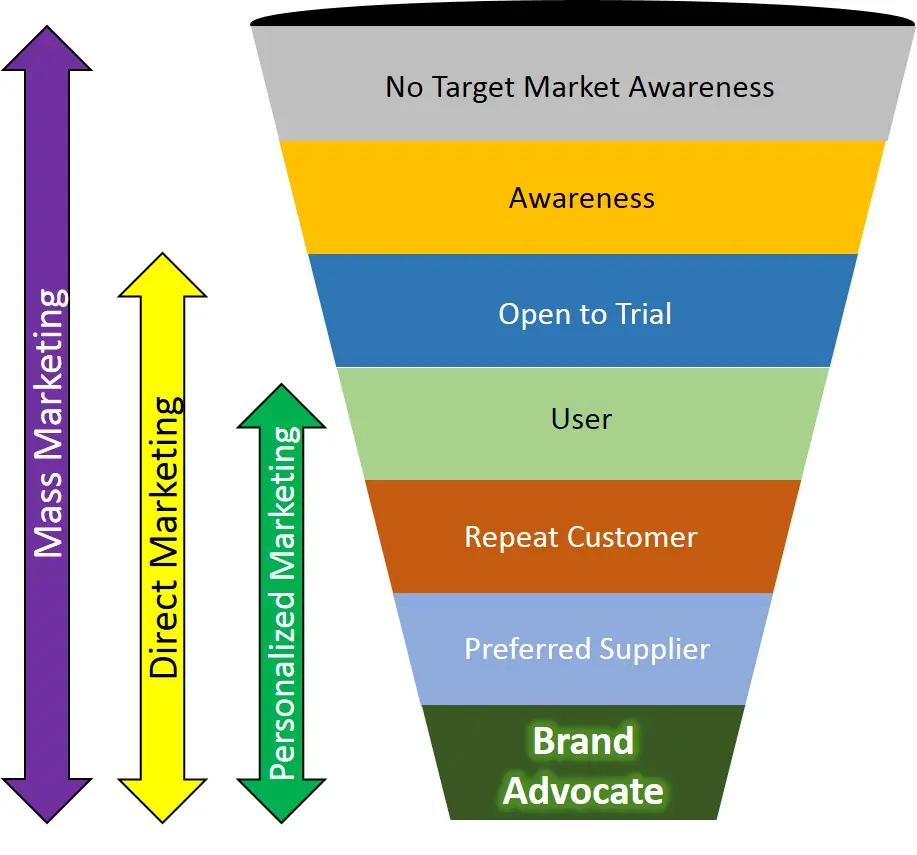
Therefore, I will share with you what I myself know about warming up.
Warming up a audience is a certain sequence of actions aimed at gradually increasing the user’s interest in your Product and bringing it (the user) to a purchase.
That is, at the point A we have a user with little interest (not at all interested or with deferred demand, in a word, not ready to buy right now) in the Product of the user, at the point B – a closed deal.
WHY ALL THIS?
Because, that “on the forehead” from the first touch, it becomes more and more difficult to sell. Well, some Products are not worth trying at all.
This is where heating warming in.
Warming up is often called a sales (marketing) funnel:
a structure in several stages, each of them should bring the user closer to the deal.
Or weed it out in principle as irrelevant.

The structure of such a funnel may be different, and it all depends on the product, the required number of steps to the sale, fantasy and budget. It may be content, some tests or questionnaires, a free product (sample, webinar, etc.), a trial period of use (for services), etc.
It’s important that the funnel, in addition to the gradual transformation of a “cold” indifferent visitor into a “hot” target visitor, also gives the entrepreneur himself an understanding of what exactly a particular potential client needs.
For example, you tell him about one Product, and by the reactions you understand that he rather needs another. Also from your assortment, but not the one that you planned to sell him.
And everyone is happy – you have satisfied the true need of the client, because you were able to find it out in the process of that very warm-up. Gave the client a more personalized offer.
Of course, using a funnel (or warming up a audience) lengthens the sales process and often makes it more expensive. And in itself, the development and implementation of this chain also costs money.
Obviously, if it is possible to sell without these perks, most entrepreneurs will choose the easy route (although this is not always the equivalent of “cheaper”).
But we must remember one more nuance. Working with a client in a few touches will allow your company to become more memorable for the consumer. More client-oriented, perhaps.
After all, you didn’t just sell, but first told/showed/advised/taught, and only then asked for money for the product.
And customer loyalty is worth something too!